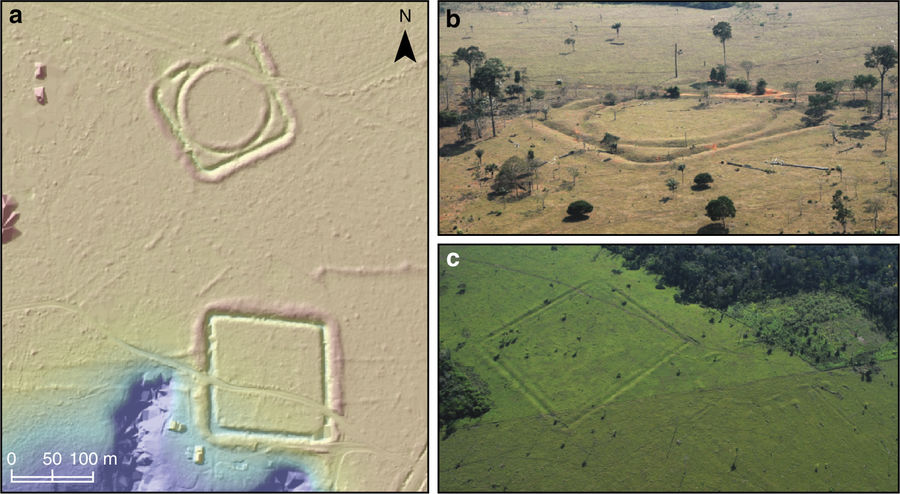
Archaeologists recently discovered that around a million people once lived in villages in regions of the Amazon basin. This evidence is contrary to claims that pre-Columbian people – indigenous people from before the European colonisation of America – occupied only areas close to the Amazon river.
Jonas Gregorio de Souza, postdoctoral fellow at the University of Exeter and lead author of the paper describing these findings, said, “We have found that some populations away from the major rivers are much larger than previously thought.” He added that “there is a common misconception that the Amazon is an untouched landscape, home to scattered, nomadic communities” but their findings imply otherwise.
Using satellite images from Google Earth and Zoom Earth, Gregorio de Souza and his team surveyed over an area of 54,000 sq km and identified sites that showed signs of human inhabitation. Deforestation facilitated the study, as they were able to clearly see what was on the ground in the satellite images only because of the absence of the forest cover.
The team discovered 81 pre-Columbian sites which accounted for 104 earthworks, i.e, structures made with soil that are often built for defence. Most of these earthworks, called geoglyphs, were circular, hexagonal or square-shaped areas enclosed by ditches. They are not sure of the purpose of these geoglyphs, but guessed that they were probably used for rituals and ceremonies.
They saw that these structures were usually located on plateaus overlooking rivers and streams, but never in mountains. The individual enclosures varied in size, between 11 and 350 m in diameter, with the largest at nearly 20 hectares. The number of earthworks found in each of these structures also differed from one site to another. Further, some of them were complex, i.e., one enclosure inside another, and others showed evidence of avenues and roads both inside and leading away from them.

On excavating some of these areas, the archaeologists often discovered domestic features such as pottery and charcoal remains, as well as evidence of burial sites. The remains suggested that this area of the Amazon basin had been inhabited by around a million people between 1250 and 1500 AD, before the Europeans arrived.
Early European colonisers described widespread settlements in these areas of the Amazon basin. Gaspar de Carvajal, who chronicled the explorations of Francisco de Orellana, wrote, “There was one town that stretched for 15 miles without any space from house to house, which was a marvellous thing to behold.” But their reports were later dismissed as fantasies.
This study, which estimates that between 5,00,000 and one million people inhabited this area of Amazon basin from Bolivia to eastern Brazil, provides evidence to support the reports of these early colonisers. The arrival of the colonisers may have spelt doom for the indigenous inhabitants and most of them succumbed to diseases and genocide.
The pre-Columbians and culture
The southern rim of the Amazon basin is currently linguistically very diverse. The researchers expect that the pre-Columbian people also exhibited similar diversity. Additionally, despite differences observed in the style of ceramics across different regions, the similarity in earthwork structures is very suggestive of interactions between these different earth-building communities, Gregorio de Souza told Ars Technica.
An interesting observation that the team made studying sites in the Upper Tapajós Basin was that smaller settlements seem to be crowded around large settlements, a pattern that is observed in indigenous communities currently occupying a nearby Upper Xingu basin.
But it is the Arawak-speaking communities that currently occupy the Upper Xingu basin, and live in large, circular villages interlinked by roads, that provide the biggest clue to who these earth-building communities were. The archaeologists expect that the pre-Columbian communities must have been similar to these these Arawak-speaking groups.
“Our research shows we need to re-evaluate the history of the Amazon,” José Iriarte, who was a part of this study and from the University of Exeter told Science Daily. “It certainly wasn’t an area populated only near the banks of large rivers and the people who lived there did change the landscape.”

